
Does simply looking at a treadmill make you age by 10 years? High-intensity interval training (HIIT) may solve that problem. While it may seem counterintuitive to ramp up your workout’s intensity as you grow older, there’s a method to the madness. These fast-paced exercises—which require short bursts of heavy cardio followed by less intense “rest” periods—can boost your metabolism, manage your blood sugar levels and torch calories in no time. And now, a new study is adding one more perk to that list: it can actually reverse your cells’ aging process.
Mayo Clinic researchers recruited 72 sedentary adults ranging from 18 to 80 years-old and assigned them to one of three 12-week workout programs: high-intensity interval cycling, strength training with weights, or a combined strength-training and cycling plan. Throughout the study, the research team tracked volunteers’ progress via improvements in their leg strength, lean muscle mass, oxygen capacity, and insulin sensitivity. They also biopsied tissue samples and analyzed cells from the volunteers’ thighs. (This is the best way to build muscle, according to science.)
All three exercise groups showed improvements in their lean muscle and aerobic capacity by the end of the 12-week session, the researchers reported. However, only those in the high-intensity interval training (HIIT) group reaped the most benefits in their mitochondrial performance, or the cell’s ability to convert oxygen into energy. The younger and older volunteers experienced a 49 per cent and 69 per cent increase, respectively. Meanwhile, nobody in the strength-training program saw significant improvements in their mitochondrial capacity, and only the group of younger participants in the combined training group did.
But why do these results matter for aging? “Mitochondria and ribosomes are organelles that are important for metabolism and aerobic fitness, but tend to deteriorate as people get older,” Health reports. “Keeping these structures healthy can reverse some signs of age-related decline within cells.” (Try these anti-aging recipes between your HIIT workouts, and you could add additional years to your life.)
However, there’s just one catch to this miracle workout: It’s not going to be much fun.
“If you can take an hour of exercise and squeeze it into one minute, there’s a price to pay,” Panteleimon Ekkekakis, a professor of kinesiology at Iowa State University, said. “The price is 100 per cent intensity. It’s undeniable that the experience will be unpleasant.”
In order to keep you on the move (and prevent burnout!), researchers recommend building intensity at a gradual pace over time. Try starting with a 15-minute workout that begins vigorously and slowly decreases to a lower intensity. Ekkekakis’s study found that adults who did this routine were more likely to report increasing pleasure during and after exercise—and still remembered it as a positive experience up to a week later.
Plus: 10 Things That Happen to Your Body When You Start Walking 10,000 Steps a Day

It’s a lesson most of us learn years before we’re old enough to see over the dashboard: Red means stop, green means go. Simple enough. But what happens when you live in a culture where green also means blue?
Drive around Japan long enough and you’ll probably run into one of the country’s mythical blue traffic lights. Elsewhere around the island you’ll find “go” signals that are decidedly teal, turquoise, and aqua. “Is this signal broken?” you might wonder. “Did some overworked light-monger install the wrong bulbs?” The answer, as Atlas Obscura points out, is not in the wiring: it’s in the Japanese language. (Here’s why Japanese children are the healthiest in the world.)
Hundreds of years ago, the Japanese language included words for only four basic colours: black, white, red, and blue. If you wanted to describe something green, you’d use the word for blue—“ao”—and that system worked well enough until roughly the end of the first millennium, when the word “midori” (originally meaning “sprout”) began showing up in writing to describe what we know as green. Even then, midori was considered a shade of ao. As you can imagine, this sudden switch-over had lasting effects in Japan. (This Japanese tradition will make you less forgetful.)
Today you’ll still see green things dubiously labelled blue. A fruit vendor might sell you an ao-ringo (blue apple) only to disappoint you that it’s actually green. Likewise, green bamboos are called aodake (“blue bamboos”) and an inexperienced employee who could be described as “green” in North America may be called aonisai, meaning a “blue two-year-old.” And that brings us to traffic lights. (These are the best cities in the world for every type of traveller.)
Initially, Japan’s traffic lights were green as green can be. Despite this, the country’s official traffic documents still referred to green traffic lights as ao rather than midori. While international traffic law decrees all “go” signals must be represented by green lights, Japanese linguists objected to their government’s decision to continue using the word ao to describe what was clearly midori. The government decided to compromise. “In 1973, the government mandated through a cabinet order that traffic lights use the bluest shade of green possible—still technically green, but noticeably blue enough to justifiably continue using the ao nomenclature,” Allan Richarz writes for Atlas Obscura.
So, while it may appear that Japan uses blue traffic lights, the government assures us it’s actually just a very blue shade of green—green enough to satisfy international regulations, blue enough to still be called ao. Don’t ever say bureaucracy never solved anything. (And make sure you brush up on these travel etiquette rules while you’re at it.)
Here are 10 things to do while visiting the Land of the Rising Sun.

If you’ve ever been on a coffee date with someone who chose black coffee over the typical indulgent caffeinated creation, you might want to take your latte and run. Apparently, you’re on a date with a psychopath. (These magic phrases can save awkward conversations.)
A 2015 study from the University of Innsbruck in Austria found that people who prefer their coffee black often have psychopathic or sadistic tendencies. (Look out for these six telltale signs someone is lying.)
The study, published in the journal Appetite, surveyed over 1,000 adults about their flavour preferences. They also took four different personality tests that assessed machiavellian traits like narcissism, psychopathy, sadism, and aggression.
Researchers found a trend that suggested a correlation between preferences for black coffee, and other bitter tastes, and sadistic or psychopathic personality traits.
They also found that people who enjoyed milky or sugary coffee, and other sweet flavours, generally tended to have more “agreeable” personality traits like sympathy, co-operation, and kindness. (These 12 real life stories demonstrate the life-changing power of a single selfless act.)
The closest correlation found in the study was between bitter foods, like radishes and tonic water, and “everyday sadism,” or the enjoyment of inflicting moderate levels of pain on others.
Yikes.
The researchers went further, suggesting that this association between bitter foods and psychopathic tendencies could “become chronic” and get worse with time.
Not a great first impression.
But there is hope for you and your casual coffee date. The researchers made it clear that “bitter” is an extremely subjective term, and that may have limited their study. They also are unsure of what causes the correlation between bitter tastes and disagreeable personality traits.
It’s also important to note that taste preferences are intensely influenced by our culture and personal experiences—not entirely by our personality traits—and that taste preferences often change over time. Remember when you couldn’t stand the taste of veggies as a kid? Most people don’t even like coffee the first time they try it!
Black coffee drinkers are also more health-conscious, even if they don’t know it. Pure coffee has all kinds of amazing health benefits, while milk and sugar obviously don’t. People who drink their coffee black reap all the health benefits of coffee without any added fat or calories.
So while you’re on your coffee date, just remember that not all psychopaths like black coffee. But most people who like black coffee exhibit psychopathic tendencies. See the difference?
Bottom line, maybe skip the coffee altogether and just go for dinner and a movie instead.

Paved roads are convenient for getting from point A to point B, but black slabs of asphalt scattered with pot holes, yellow lines, and arrows aren’t the prettiest thing to look at. Imagine a place where all the roads are replaced with canals. No more honking horns, screeching breaks, or aggressive drivers. (Check out the most popular travel destinations for fall.)
Good news! A place like this actually exists, and it’s as gorgeous as you imagine it would be. In the town of Giethoorn, Holland, the only way to get around is by boat, bike, or on foot. It’s located about 75 miles north of Amsterdam, and it sits inside the Weeribben-Wieden National Park. About 180 footbridges allow people to travel over the canals throughout the town. (Here are 10 gorgeous beaches with the clearest water in the world.)
As you might have guessed, the population of Giethoorn is very small, and not many people know about it so tourists are few and far between. It’s obviously a stunning place to visit in the summer, but in the winter you can explore to town on ice skates when the canals freeze. People often refer to this sleepy canal town as the Dutch Venice because of its beauty and romantic feel. (These heart-shaped islands and lakes from around the world are almost too stunning to believe!)
Leaving your car outside of the town and exploring the four miles of canals surrounded by thatched-roof farmhouses will be the restorative vacation you never knew you needed. (From private beaches to skiing in the Alps, you can tell a lot about a person by the holiday that tops their bucket list.)
Plus: The Best Cities in the World for Every Type of Traveller
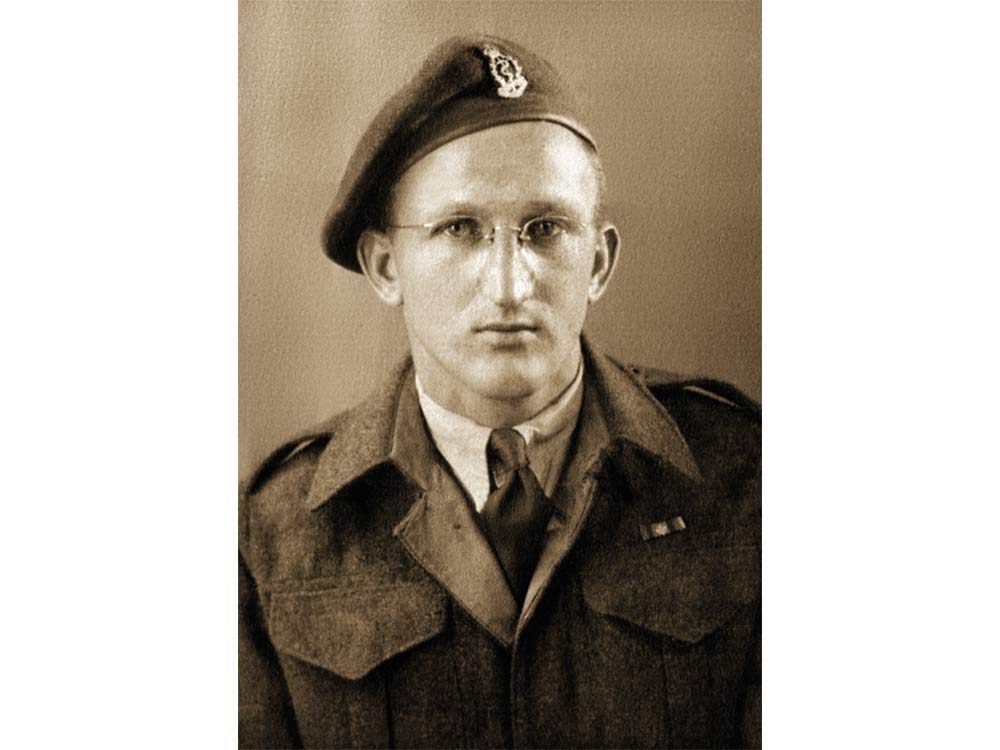
Veteran Profile: Rudy Deutsch (Medic, 5th Field Ambulance)
Rudy was born on Nov. 26, 1922, on the family farm near Quinton, Sask. He was the ninth of 17 siblings.
“The first time I went into action it was as a stretcher bearer in Italy. We were carrying this wounded fellow, me and three others, and because I was wounded too, I had to take a break. We put the stretcher down and one of the legs landed right on top of a mine. The fellow we were carrying was killed and the other fellas were thrown in the air. That bothers me to this day, because I was the one who needed a break.”
Rudy passed away in Red Deer, Alta., on Oct. 27, 2015.
For more profiles by Veterans Voices of Canada, click here.
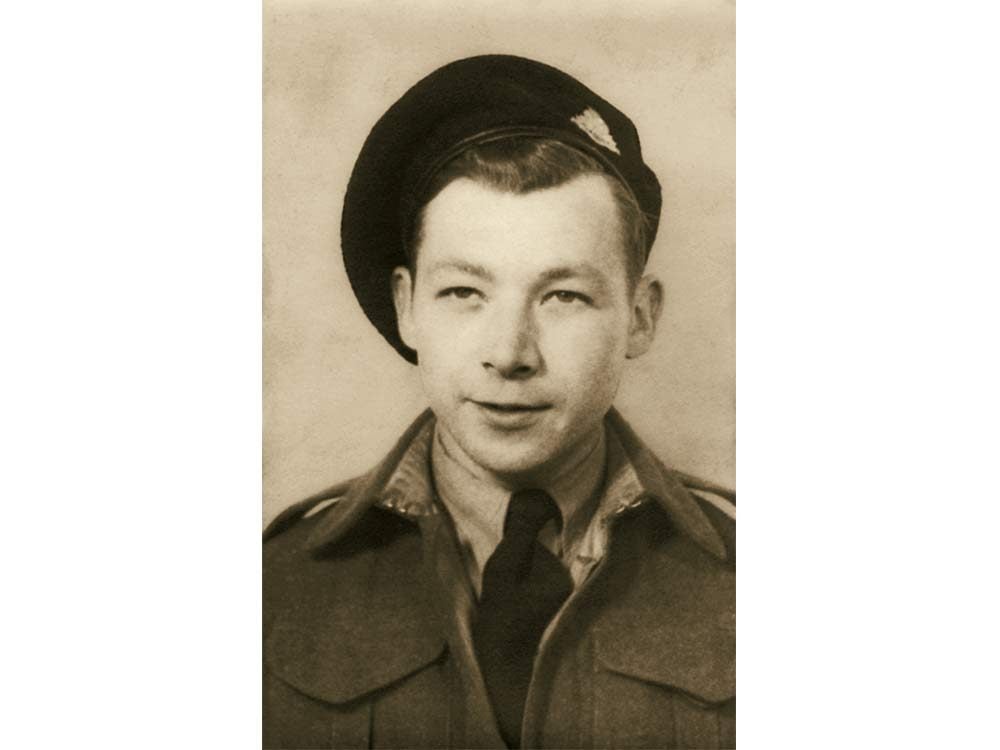
Veteran Profile: Leonard James Brown
Leonard joined the 30th Reconnaissance/Essex regiment (tank) in July of 1943. He soon transferred to the 17th Duke of York’s Royal Canadian Hussars.
“Dad wanted me to be a dispatch rider, but when he found out the life expectancy was shorter than aircrew, he changed his mind. I joined the armoured corps and became a Bren gun carrier driver instead. Many times, I drove directly at German machine gun nests with bullets fired at us, bouncing all over the front of the carrier.”
Leonard was discharged in 1945.
For more profiles by Veterans Voices of Canada, click here.
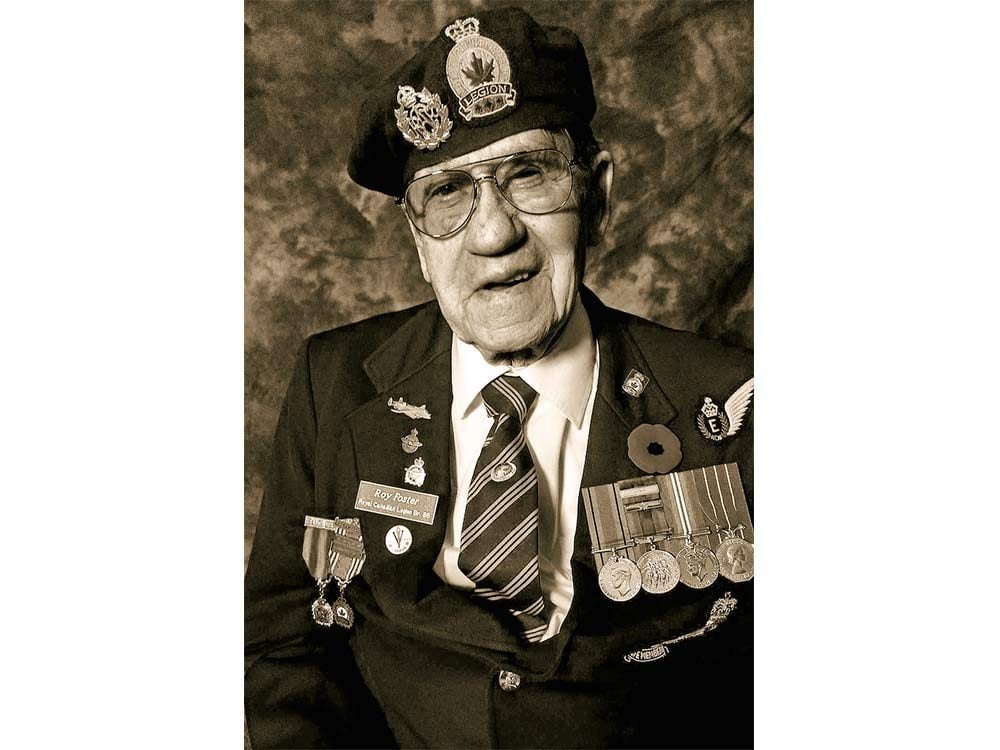
Veteran Profile: Roy Foster
Born in Kamloops, B,C., on November 19, 1924, Roy tried to join the Canadian Navy first, but his age prevented him from being accepted. Since he was familiar with farm and mobile machinery, he later became an air frame mechanic with the RCAF, signing up in Calgary. He eventually became a flight engineer overseas with 420 Snowy Owl Squadron, flying his first operational flight over Cologne, Germany, in 1944.
”After a few days on squadron I was told I was going on a raid. I was scared to death. You would see the flak even through the searchlights, and wonder how you got through it.“
Roy was discharged in 1945, and now lives in Wetaskiwin, Alta.
For more profiles by Veterans Voices of Canada, click here.
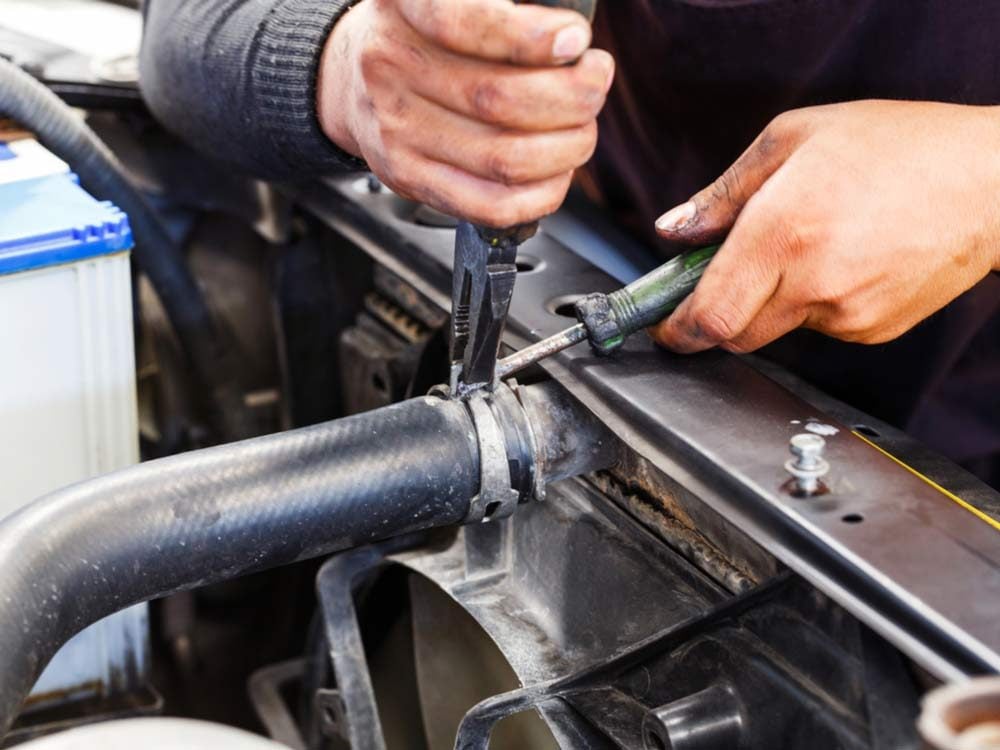
What You’ll Need to Install a Coolant Hose
- Screwdriver
- Sharp knife
- Tin snips
- Wire brush
- Heat gun (depending on the clamp used)
1. Before you begin, make sure you aren’t running the engine without proper ventilation. (Safety note: If you need to raise your vehicle, use safety stands under the frame or drive-on ramps.)
2. Remove the hoses being replaced. Drain the cooling system. Most hoses should gently twist off after you loosen the clamp.
3. Make sure the fitting is not distorted or corroded. It’s best to clean the fitting neck with a wire brush before installing a new hose.
4. Changing a coolant hose also means installing new hose clamps. When installed properly, these clamps maintain a constant tension so they never need to be retightened.
5. Make sure the hose is shouldered well-beyond the fitting edge and the clamp is positioned between the hose end and edge of the fitting.
6. Slip the clamp onto the hose end and then slide the hose onto fitting.
7. Make sure the hose clamp is positioned so the tightening device is easy to reach.
8. Slight twisting or bending of hose may be required. However, make sure the hose does not become pinched, or put into an abrasive or high heat situation without a protective sleeve. Proceed and tighten the hose clamp.
9. Re-fill the coolant system. Be sure to check the strength of the engine coolant and replace it if it isn’t strong enough. Start the engine and let it run until the engine has heated up. Additional coolant may need to be added.
10. Do a final visual inspection to ensure there are no leaks. (For detailed instructions pertaining to your specific vehicle, consult an appropriate repair manual.)
Plus: How to Check the Fluids in a Vehicle
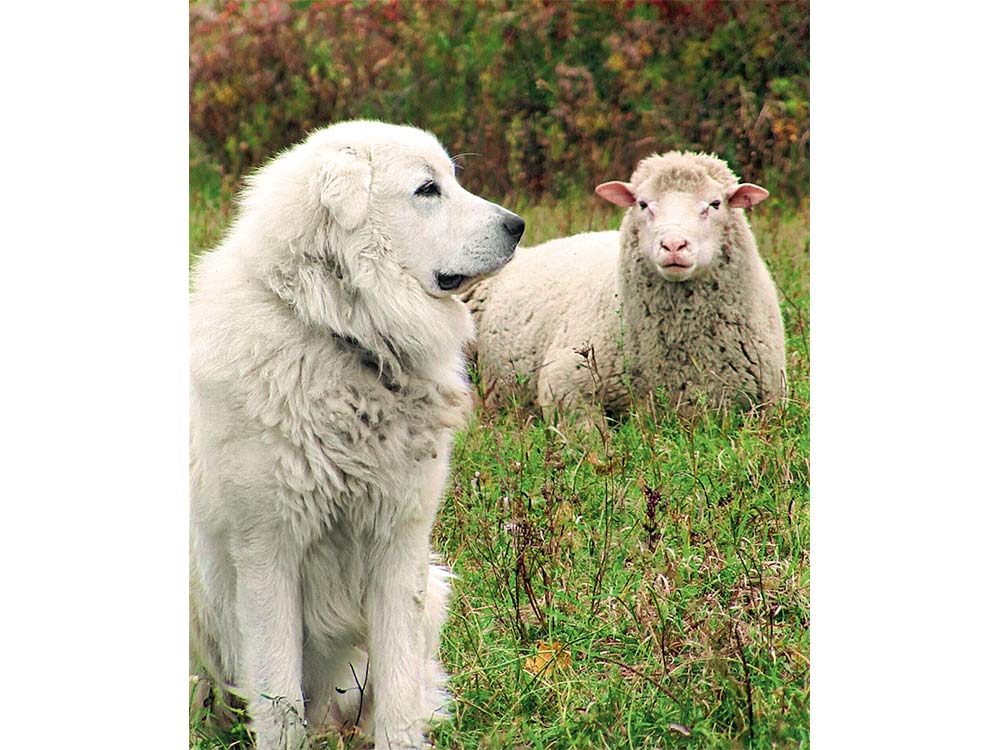
“I wish ewe would stop staring.”
Here’s a new twist on Caption Corner—you supply the funny photo, we supply the one-liner! Thanks to Michelle Loyer of Wellington, Ont., for sharing this great photo with us. Send your pics here!
Share your own funny or sweet one-liners for this photo in the comments section below!
Check out more Caption Corner challenges.
Don’t miss out-sign up for the Our Canada e-newsletter!
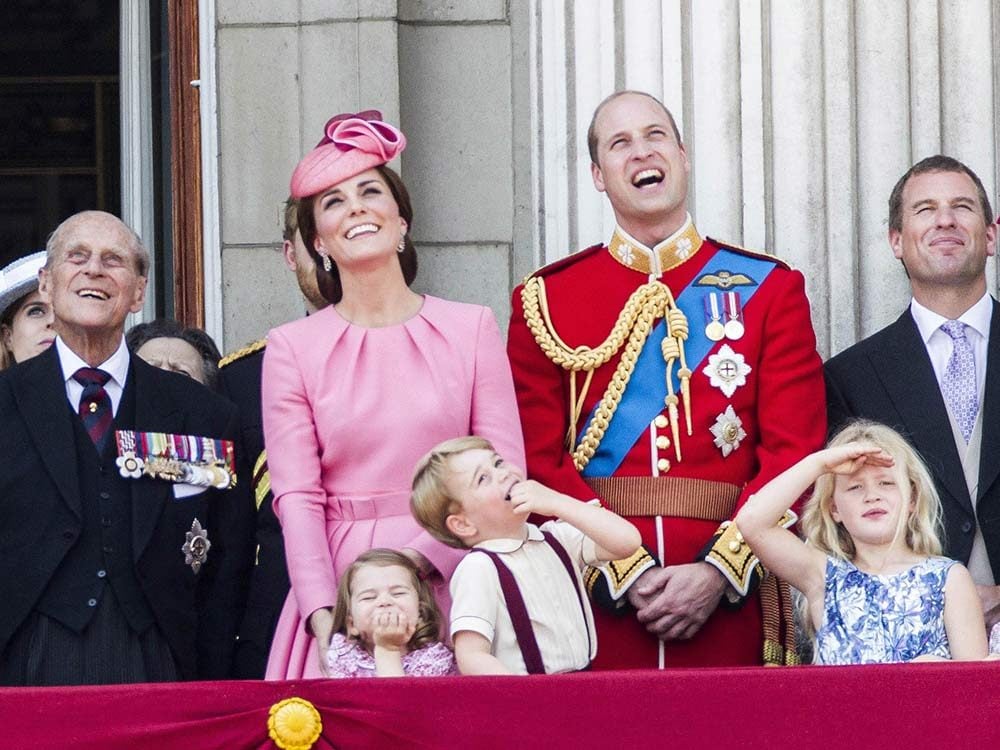
Unless you’ve been too enthralled with your long weekend activities to check the news, you’ll know that Prince William and Kate Middleton are expecting their third baby. Anglophiles, rejoice!
The Duke and Duchess of Cambridge’s announcement has already made a ripple online. But few people know that the new royal addition could also have a major impact on the British royal line of succession.
The British royal family lives by some pretty strict rules. For example, the royals have banned the use of these eight words. Here’s another one: Male royals have traditionally had precedence over their sisters when it comes to inheriting the crown. But thanks to the Succession of the Crown Act in 2013, a female child can officially maintain her place in line for succession, no matter the gender of her younger sibling or siblings.
That spells good news for Princess Charlotte, who is currently fourth in line for the throne. She may not be the youngest anymore, but her status for the crown won’t change—regardless of whether she gets a little brother or sister in a few months. (Here’s a guide to what Prince George will inherit.)
Still, a third royal baby means that poor Prince Harry has been bumped down again in the royal succession chain, making him sixth in line for the crown. But we have a feeling the three-time uncle isn’t too upset.
Plus: This is How Much Each Person in the British Royal Family is Actually Worth